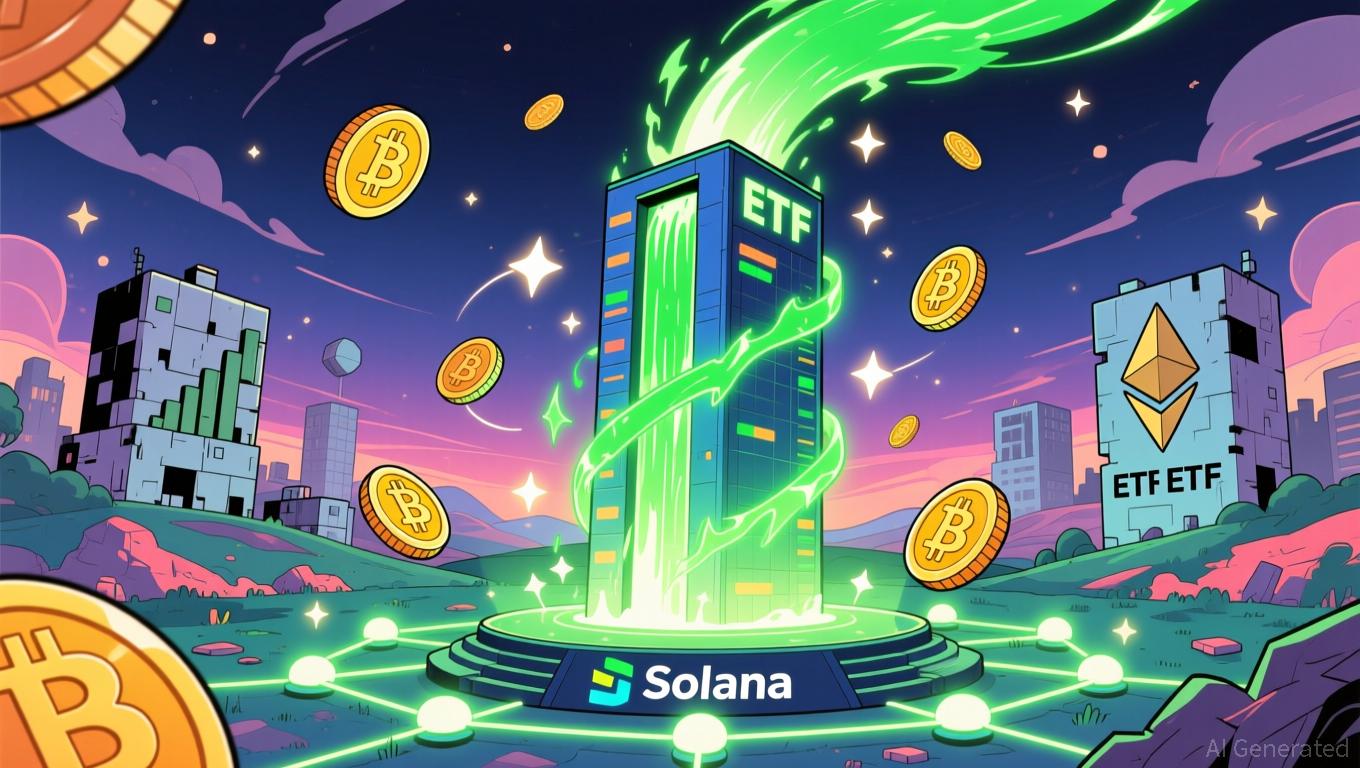Bitcoin Updates: The 2026 Transformation in Crypto—Infrastructure Surpasses Speculation
- Crypto market anticipates 2026 growth driven by infrastructure upgrades and structured tokenomics, contrasting volatile meme coins like PEPE and BONK . - Bitcoin Munari (BTCM) advances with Solana integration and $0.01 presale model, targeting 2027 Layer-1 launch with EVM compatibility and privacy tools. - Bullish's Q3 2025 resilience during market crashes highlights its AMM liquidity advantages, while tokenization services gain traction amid institutional demand growth. - Institutional-grade infrastruct
The digital asset sector is gearing up for a possible rally in 2026, fueled by progress in infrastructure and the adoption of well-designed tokenomics frameworks intended to surpass the unpredictable performance of altcoins such as
Bitcoin Munari, a blockchain initiative focused on layered infrastructure, has

At the same time, Bullish, a regulated digital currency exchange,
These initiatives stand in stark contrast to fleeting meme coins. While PEPE and BONK depend on viral social media trends, Bitcoin Munari’s measured public engagement and its 2026 testnet schedule demonstrate a deliberate development process. Likewise, Bullish’s focus on regulatory adherence and robust infrastructure reflects the industry’s shift toward assets with practical use cases.
With 2026 on the horizon, investors are showing a preference for projects that offer transparent technical plans and tangible applications. Thanks to Bitcoin Munari’s Solana integration and Bullish’s progress in tokenization, the crypto landscape may be entering a new phase centered on foundational infrastructure, leaving speculative tokens behind.
Disclaimer: The content of this article solely reflects the author's opinion and does not represent the platform in any capacity. This article is not intended to serve as a reference for making investment decisions.
You may also like
Solana News Today: The Rise of Stablecoins Indicates Investors Are Favoring Stability Instead of Riskier Protocols
- USDC stablecoin surpassed Solana (SOL) in market cap, signaling a shift toward stablecoins over volatile protocols. - Solana Company reported $352.8M Q3 2025 net loss, driven by derivative liabilities and unrealized treasury losses. - USDC's growth stems from institutional partnerships, including Parfin and Orobit.ai, aligning with pro-crypto regulatory trends. - Coinbase's ETH-backed USDC loans and infrastructure expansion highlight stablecoin utility in bridging traditional and crypto finance. - Market

Solana News Today: Staking Drives Altcoin ETF Boom as Investors Look for Returns Outside of Bitcoin
- Solana ETFs attract $476M inflows since October 28, driven by staking rewards and lower fees compared to Bitcoin/Ethereum ETFs. - Bitwise's BSOL dominates with 89% of inflows, leveraging 0.20% fees and on-chain staking to generate returns for investors. - Despite ETF growth, Solana's price remains below key EMAs at $141, with analysts warning of potential support tests below $120. - Bitcoin/Ethereum ETFs face outflows as investors shift toward yield-generating altcoin products, signaling market strategy

Zcash Halving Scheduled for November 2025: How Supply Disruptions Are Influencing Institutional Crypto Investment Strategies
- Zcash's 2025 halving reduced block rewards by 50%, intensifying deflationary pressure and triggering a 750% price surge to $680. - Institutional investors like Cypherpunk and Grayscale allocated $287M to Zcash, citing its 3.5% inflation rate and privacy-focused proof-of-stake model. - Regulatory scrutiny labeled Zcash an "anonymity-enhancing asset," but optional privacy features and AI compliance tools help institutions navigate risks. - Market volatility and competition from newer privacy protocols pose
Zcash (ZEC) Price Rally: Is the Privacy-Focused Cryptocurrency Poised to Enter the Mainstream?
- Zcash (ZEC) surged 472% to $420, driven by institutional investments and regulatory clarity in 2025. - Grayscale and Cypherpunk Technologies allocated $137M and $150M to ZEC, citing its compliance-ready privacy model. - U.S. Clarity/Genius Acts enabled Zcash's selective transparency, bridging privacy with AML requirements for institutional adoption. - Regulatory risks like FinCEN's "mixer rule" and developer scrutiny persist, testing Zcash's balance between privacy and compliance. - Zcash's institutional